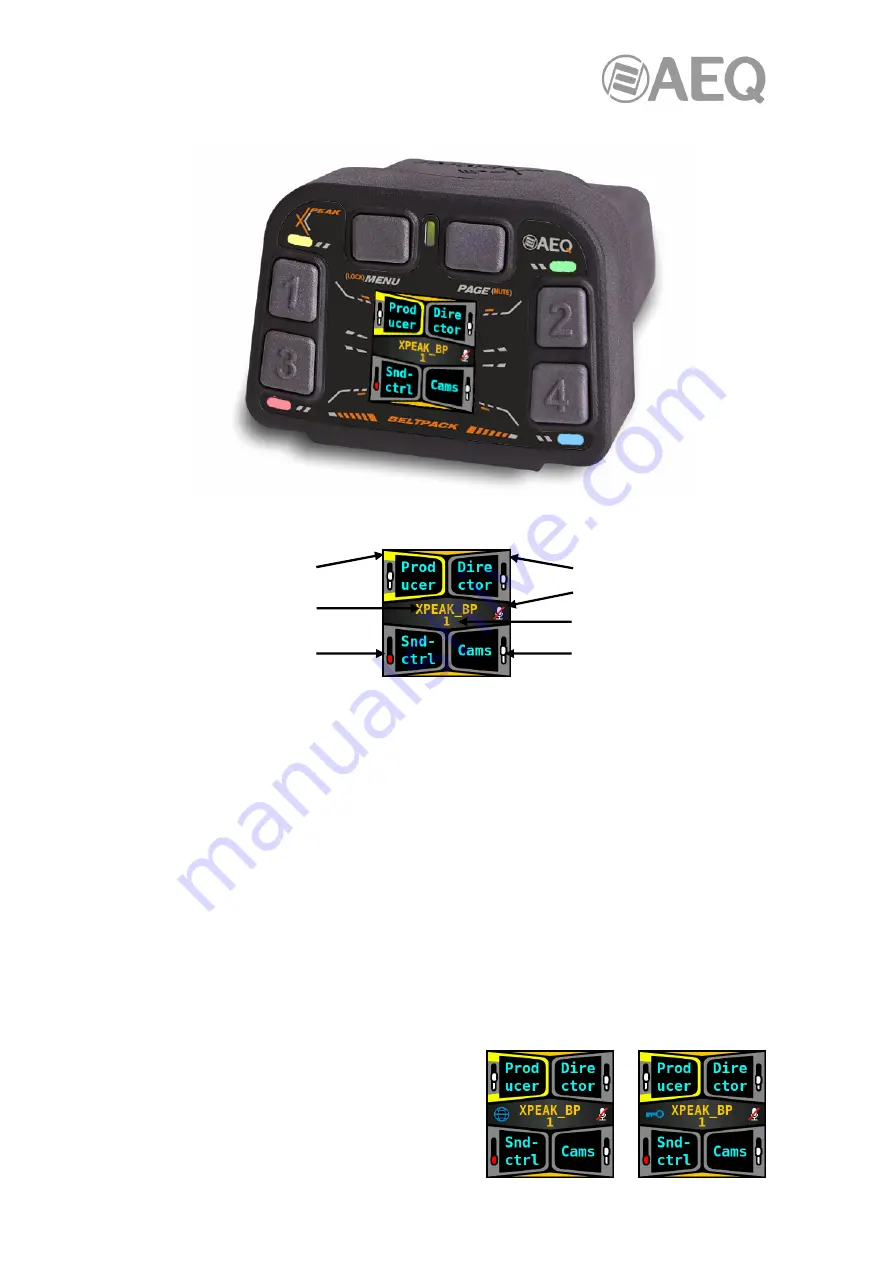
AEQ
XPEAK
IP Intercom System
30
3.2. Xpeak_BP menus.
On the operation screen of the unit, the display shows the following information:
In the example above, all 4 keys are configured and the destinations associated with each key
are "Producer", "Director", "Snd-ctrl" and "Cams" respectively. When programming a key from
the "AEQ Xpeak" application, a label is automatically associated with it according to the
destination and the type of command: if we use the default label it appears written in white on
the display, while if the text is changed appears in cyan.
Regarding the color of the keys, green indicates that the key has been pressed on the
equipment itself and red indicates that communication has been established (unidirectional if it's
flashing or bidirectional if it remains fixed). The color yellow would indicate the combination of
green and red, as follows:
•
Fixed yellow: fixed green (pressed key) + fixed red (bidirectional communication).
•
Blinking between green and yellow: fixed green (pressed key) + blinking red
(unidirectional communication).
•
Fixed green: the key has been pressed but there is no communication with the
destination device.
In the example above, the fist key is yellow because it's been pressed on the equipment itself
and bidirectional communication is established; that key would be red if the communication had
been established from the remote device (fixed red when that communication was bidirectional
and blinking when it was unidirectional).
Finally, at the left of the device name, the icon of
the globe may also appear (indicates that there is
an Internet connection) or the icon of the key
(indicates that the unit is connected to the AEQ
VPN service):
Activated key
Device name
Muted audio
Deactivated key
Muted microphone
Page
Reception volume






























